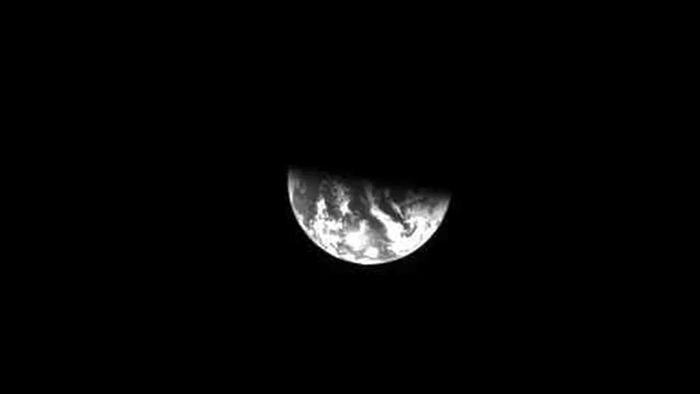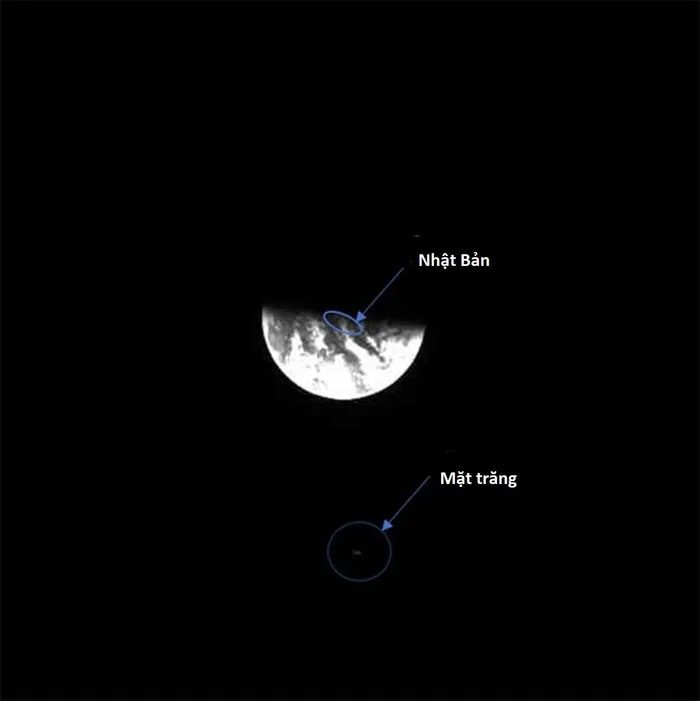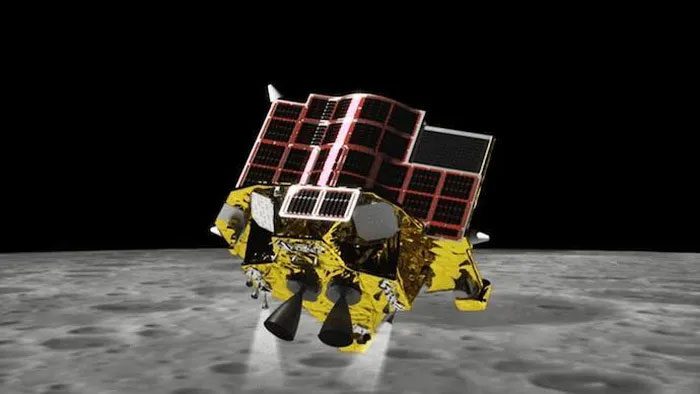Behind This Image is a Critical Test for Japan’s Spacecraft.
The SLIM Lunar Lander from Japan has sent back a strange image of Earth. This photograph serves to test the sensitivity of the camera that SLIM will use to assist in the precise landing on the Moon in the near future.

Earth image taken by SLIM spacecraft at a distance of 160,934 km. (Photo: JAXA/SLIM).
This image plays a role as a crucial test for the camera system of SLIM, an essential component in ensuring a precise landing on the Moon.
This vision-based positioning system with dual cameras is specially designed to distinguish the location of craters using onboard data.
The photograph was taken from a distance of 100,000 km from Earth. This distance is equivalent to one-third of the distance that light travels in one second, as light moves at 300,000 km per second.
According to the Japan Aerospace Exploration Agency (JAXA), the Smart Lander for Investigating Moon (SLIM) was launched on an H-2A rocket on September 7, 2023, from the Tanegashima Space Center in southern Japan.
It has successfully passed the first critical stage in Earth orbit and captured images of our planet.
This monochrome image shows Earth half-covered in darkness against the vastness of space.

Full image from SLIM spacecraft showing Japan’s location on Earth and the Moon. (Photo: JAXA).
Essentially, this image captures two celestial bodies: Earth and its Moon. However, due to its monochrome nature and the great distance from which it was taken, the Moon is almost invisible without the accompanying caption.
Japan’s SLIM: A Distinctive Technology Demonstration on the Moon
The craters on the Moon not only play a vital role in understanding the Moon’s history but also serve as landmarks for landers to self-position based on data from previous spacecraft.
Japan’s lunar lander will use a similar approach as its mission aims to demonstrate precise landing technology on the Moon.
The Japanese research team has confirmed that the rover on the SLIM lander has been powered on and is undergoing functional tests.
The team stated: “During this time, the group of scientists on the ground will use amateur radio frequencies to communicate with the lander.”
SLIM is Japan’s first surface mission to the Moon. This $100 million spacecraft is following a long trajectory around the Moon.
It will take several months for SLIM to reach lunar orbit and execute its crucial landing, according to Reuters.

Illustration of Japan’s SLIM spacecraft. (Photo: JAXA).
JAXA has not yet announced a scheduled landing date on the Moon, although they indicated that the spacecraft will take 3 to 4 months after launch to reach the Moon.
This longer route saves fuel and is compatible with the lightweight spacecraft’s mass.
Upon reaching lunar orbit, the spacecraft will prepare to demonstrate landing capabilities within 100 meters of the targeted landing site.
This aims to verify landing techniques, aiding more complex landing missions in the future.
The SLIM Mission is distinct from previous lunar landing missions by many other countries, as it aims to land in a precise area rather than a wide region of kilometers, according to IFLScience.
JAXA President Hiroshi Yamakawa stated at a press conference: “The major goal of SLIM is to demonstrate the capability of highly accurate landings on the Moon’s surface, rather than just landing where we want.”
Japan’s SLIM launch took place two weeks after India became the fourth country to successfully land a spacecraft on the Moon through the Chandrayaan-3 mission, exploring the uncharted South Pole of the Moon.
Two previous lunar landing attempts by Japan failed in 2022. JAXA lost contact with the OMOTENASHI lander and canceled the landing attempt in November.
The Hakuto-R Mission 1 lander, produced by the Japanese startup ispace (9348.T), crashed in April while attempting to land on the Moon’s surface.


















































